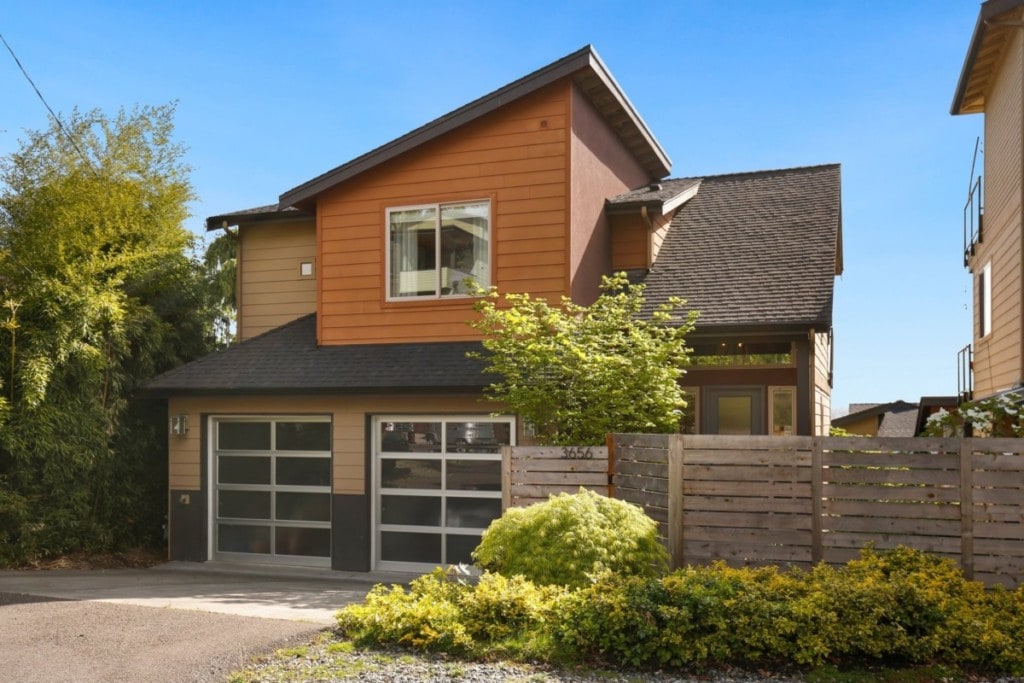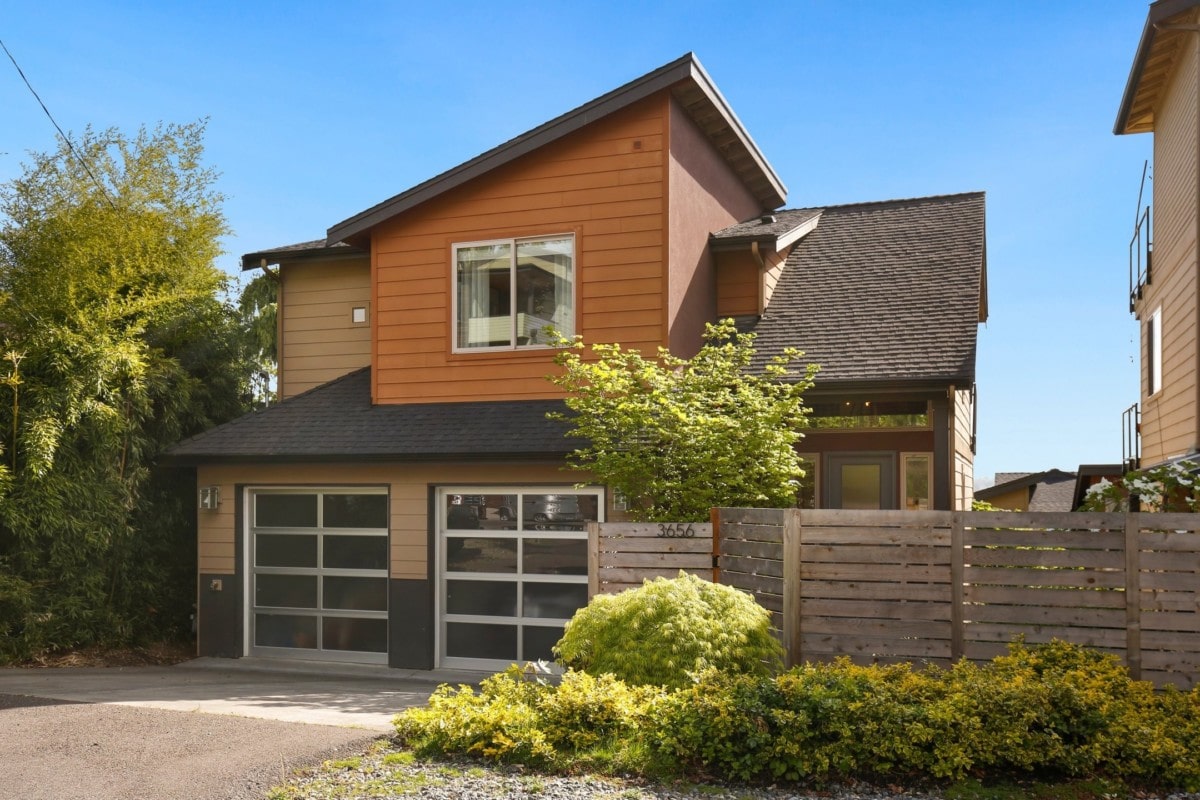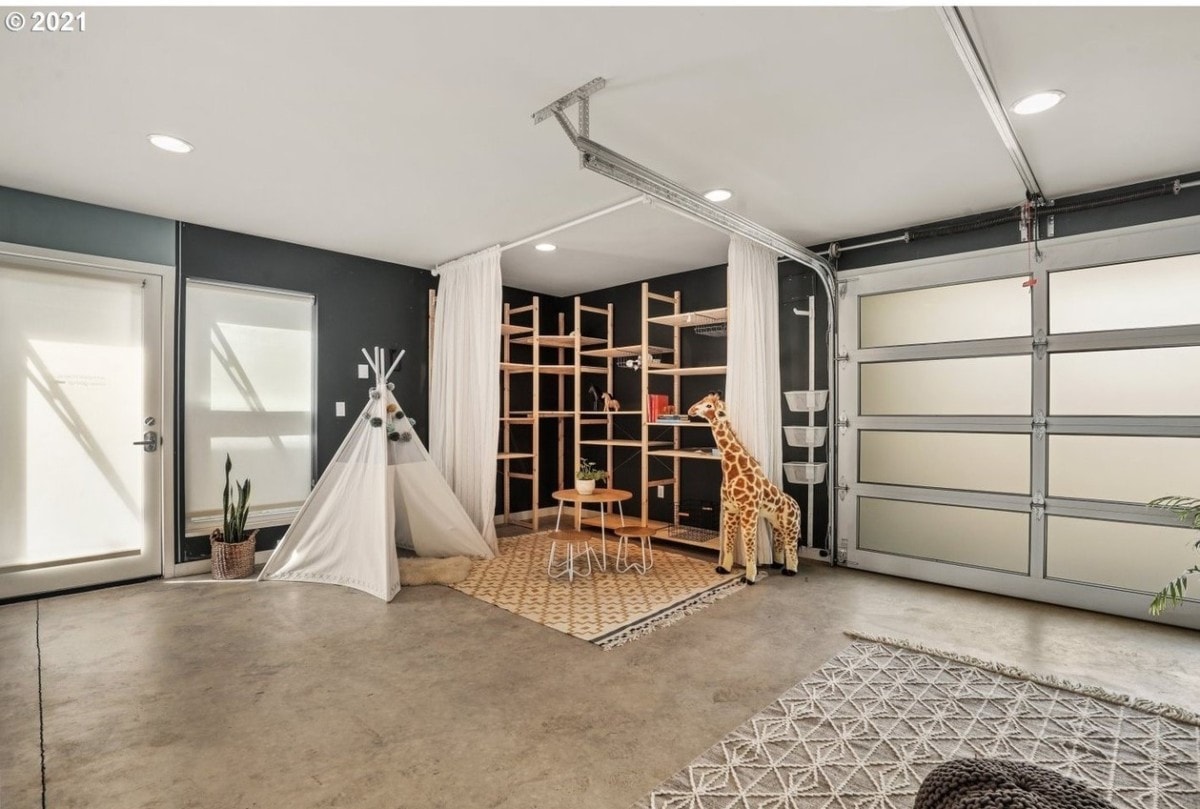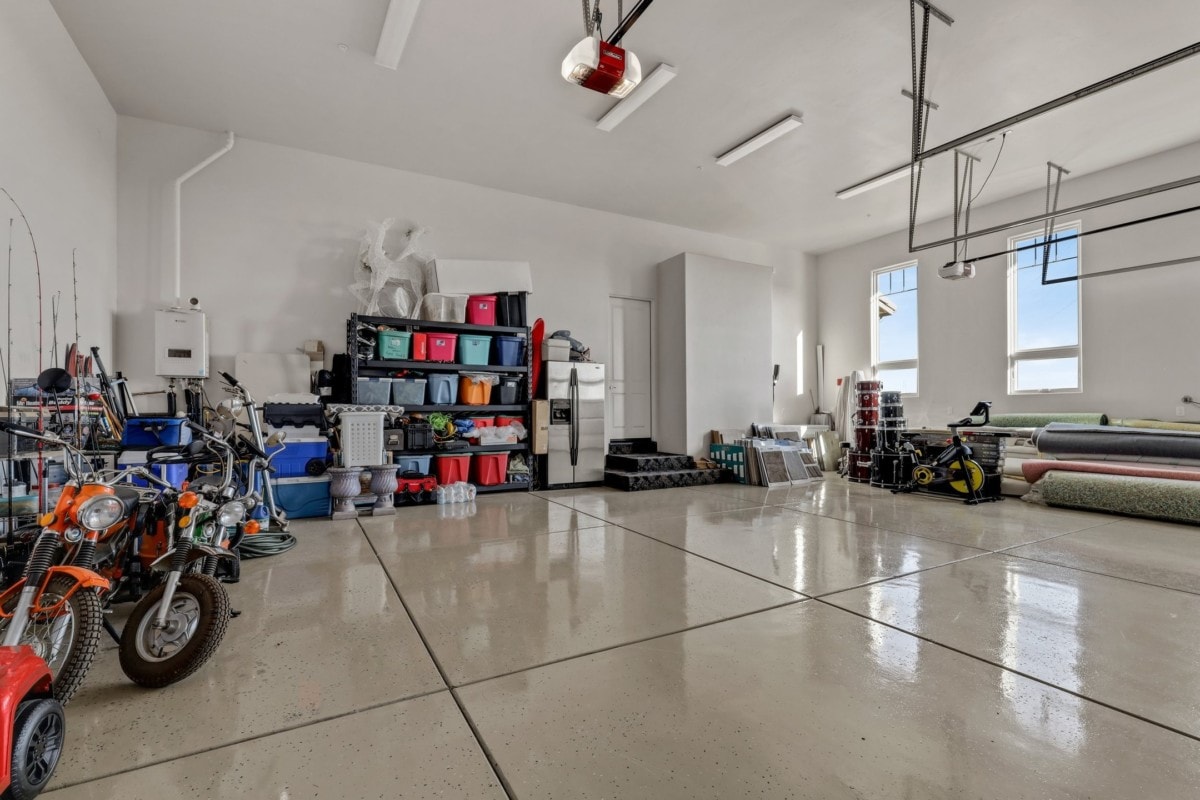Convert Your Garage Into a Living Space: A Garage Makeover Guide


For most homeowners, a garage is a place to store cars, tools, or function as the “catch-all” for anything that’s not currently in your home. However, with a little imagination and added preparation, it’s possible to transform a garage into a usable space for far more than just storage. And, if you’re looking to add a little extra living space, finishing an underused garage into a bonus room is a great option to maximize the square footage of your home.
While converting your garage into a living space seems like a straightforward project for most DIY-savvy homeowners, there are many hefty tasks that include insulating the walls, weatherizing doors and windows, updating the flooring, and other upgrades to turn it into a livable space. Whether you own a home in Atlanta, GA, have a house for rent in Portland, OR, or are buying your first home after living in an apartment in Los Angeles, CA, here’s what you need to know to transform your garage into a practical, yet stylish addition.
In this article:
Start with a plan
Nail down your design
Clear out the space
Add insulation to the walls
Finish walls and ceilings
Install AC and Heat
Weatherize doors and windows
Add some windows to your garage
Consider swapping the garage doors for some windows
Plan for additional utilities
Select the right kind of flooring
Pick your lighting
Install smoke detectors
Protect against pests
Decorate and design for comfort
How much does it cost to convert a garage into a living space?
Does finishing a garage add value to your home?
Does the garage count towards the square footage of a house?
In conclusion: go forth and build

Start with a plan
Before getting started, make sure you understand the scope of your project, your budget, and the steps you’ll need to complete to ensure your renovation meets – or exceeds – your expectations. First and foremost, making a plan is an essential step for any home renovation. Prior to calling a contractor or buying insulation to install yourself at the hardware store, you’ll need to come up with a plan to determine:
- How much money you have to spend on renovating your garage
- How you plan to use the space once the garage renovation is finished
- What utilities you would like to include in your bonus space, like running water or electricity, that may not already be in place
- Whether building permits are required in your area
- A timeline for project completion
- Potential contracting resources to assist with planning and implementation
Getting a permit can be tricky in certain locations, so it’s a good idea to check before getting too deep into the project. “Garage conversions can work in many places, but watch out for certain things that can make getting your approval more difficult,” says Erik Yesayan, principal of Pattern Planning & Development Inc., a land use consulting and permit expediting firm. “If your property is in the coastal zone, relies on a septic system, or in a high fire hazard zone, then you’ll probably need to make extra improvements and navigate a stricter approval process.”
Another step to take before moving onto the meat of the project is to get a floor plan drawn up. “Before hiring a contractor, make sure you have a floor plan drawn by a professional such as an interior design drafter,” says Samia Jawab of The Right Triangle, a full-service Long Island interior design firm. “Floor plans will show you if your vision is realistic, and save you money by avoiding mistakes and redos.”

Nail down your design
With a floor plan drawn up, you’ll want to sit down and figure out the specifics – either with a contractor or on your own. “First things first — nail down your design before diving into the build,” says Matt of Construction Corps, a home remodeling service in Clearwater, FL. “Whether it’s a wood-framed or masonry garage, we assess the structure and recommend the right insulation — spray foam, fiberglass batts, or rigid foam board. Masonry garages usually need interior framing to run electrical and finish properly. Good sealing, ventilation, and moisture-resistant materials make all the difference.”
Clear out the space
Before you jump straight into finishing a garage, you’ll need to remove any items and find alternate storage arrangements. Even items that you plan to put back in your garage once your renovation is completed will need to be temporarily rehomed. Depending on how you currently use your garage space, this could be a quick task or one that drags out for days, so plan your renovation timeline accordingly.
Add insulation to the walls
Most garages are intended for car storage, the primary purpose, of course, is to protect against the elements rather than keeping temperatures at a comfortable level. However, if you’re going to be using the area as a bonus living space, insulating your garage should be a priority to account for temperature fluctuations. “Proper insulation is essential for comfort and energy efficiency,” says Scott Le of Amplified Renovations, a home remodeling company. “Spray foam insulation is ideal for garages because it seals gaps and irregular spaces while providing excellent thermal resistance and moisture control.”
This can be a challenging task, particularly for those new to insulation and finishing walls, so hiring a professional contractor can help ease any apprehensions about installation. A pro can identify the best form of insulation to use for your planned space and ensure insulation will be put in place correctly.
Finish walls and ceilings
Once the insulation is in place, finishing walls and ceilings will help to bring the space together. This step will transform your garage from a cold and utilitarian space to something comfortable and pleasant. This generally involves putting up a layer of drywall prior to any wall or ceiling treatments. A contractor can be an asset here as well, ensuring your walls and ceilings are up to code and prepared for things like a wall-mounted TV or hanging light fixtures.
Install AC and Heat
For a truly comfortable living space, you’ll want to install AC and heat in your garage. “When converting a garage into a livable space, a ductless mini-split system is the most efficient way to add heating and cooling,” says Jack Carr, owner of Rapid Heating and Cooling, a professional HVAC service in Brentwood, TN. “These systems provide comfort with minimal installation hassle, energy savings, and no need for ductwork — making them ideal for transforming garages into year-round living areas.”
Nadya Sidler of Sidler Designs, an interior design service in New York and San Diego, agrees: “Ensure proper ventilation and climate control by installing a mini-split HVAC system. Unlike central air, it doesn’t require ductwork and can efficiently heat or cool your converted garage, making it comfortable year-round without major renovations.”

Weatherize doors and windows
As temperature control is rarely a priority in standard garages, doors, and windows, these are generally not weatherized the same way as a home. However, if your finished garage will be serving double-duty as a workshop or hobby area, weatherizing doors and windows can help with energy savings throughout the year. Plus, if you live in an area with fluctuating temperatures such as Ottawa, ON, it’ll prevent that uncomfortable rush of frigid or humid air from entering the space.
“Garages weren’t built for insulation, so any openings must be thoroughly weatherized,” says George Varga, owner and general contractor at Above & Beyond Construction, a high-quality remodeling and construction company based in Port Orchard, WA. “Install insulated exterior doors, use high-quality weatherstripping, and caulk around window and door frames. If retaining any original garage windows, consider replacing them with double-glazed, low-E units for better efficiency. This reduces energy loss and helps maintain indoor climate control.”
The weatherizing required for your garage space will depend on its current construction – for example, not all garages have windows or additional doors – so a contractor can be a valuable asset in identifying needs and implementing effective plans. This can be as simple as adding extra insulation around openings or as complex as fully replacing doors and windows with more appropriate alternatives.
Add some windows to your garage
If your garage doesn’t have any windows, you may want to look into installing some to increase natural light and ventilation. “When converting a garage into a livable space, choosing the right windows is key to making the space feel comfortable, functional, and energy-efficient,” says Ryan Dalley, owner of Michigan Screens, a Michigan-based company specializing in window replacement and repairs.
He adds, “You may need to add additional well-placed windows to improve natural light and ventilation while ensuring insulation and security. Whether you opt for large picture windows to create an open feel or operable windows for airflow, selecting energy-efficient options will help maintain comfort year-round while improving the overall feel of the space.”
Consider swapping the garage doors for some windows
For the more adventurous remodelers, maybe replacing the garage doors with windows or French doors will give your space the vibe you’re looking for. “You can really maximize natural light by replacing the garage door with large windows or French doors,” says Nadya Sidler of Sidler Designs, an interior design service in New York and San Diego. “This not only brightens the space but also helps it feel more connected to the rest of your home, transforming it from a dark storage area into a welcoming living environment.”
Before running outside and tearing the garage doors off their hinges, stop to consider how this change will affect the look of your home. “You need to decide on how you want your house to look from the outside,” adds Samia Jawab of The Right Triangle, a full-service Long Island interior design firm. “Are you leaving the garage door as is and building your walls inside? In this case, you will need to add more windows for natural light and maybe a side door for easy access.”
There’s no right or wrong answer, but it’s a good idea to consider all your options when dealing with a massive renovation.

Plan for additional utilities
Most garages, especially attached garages, are wired for electricity to some degree, but generally not in a way that mirrors a conventional living space. For example, if you plan to convert your finished garage into a video game room, additional outlets and wiring may be required. This is also true if you plan to add a bathroom, sink, washer, or anything else that may require a water line.
“The first major hurdle of building a DADU is setting up the infrastructure to connect the new building (or conversion) to power, water, and sewer,” says Bruce Morse of Remodel Seattle LLC, a home remodeling service in Seattle.
“Natural gas will depend on the city or county where the DADU is located. Water and power can be run uphill or down – it doesn’t matter. Sewer is a different matter. If the DADU is placed higher (even a couple of feet) than the existing home then tying the sewer line into the home’s sewer line is less of a problem. If the DADU is located lower than the house then a pump system will have to be installed. This can add thousands of dollars to the cost of construction. Either way, the DADUs sewer line is usually tied into the main line running from the home to the street.”
All of these new utilities can put strain on your electrical panel, so it’s a good idea to check first if you’ll need to upgrade. “If you’re adding a kitchen, bathroom, HVAC, or laundry, your current service may not support the increased load,” says Corey Gilgan, owner of Oregon Generators, a home generator installation and maintenance company. “In other cases, you may find that your old panel is no longer to code and will need to be replaced before getting electrical permits. If you do have to replace your panel, make sure it’s large enough for an EV outlet, as we increasingly are seeing more and more homeowners realize they need to upgrade their panel to accommodate an EV charger.”
Running water lines and enhancing wiring can be costly, so it’s best to plan this ahead before starting the renovation process. These kinds of tasks are best left to the professionals, so you’ll want to include licensed plumbers and electricians in your budget.
Select the right kind of flooring
Most garages have uneven concrete or cement floors, none of which is ideal for a comfortable living space. As such, you will need to choose a durable flooring option for your converted garage. “Garage floors are often uneven or cold, so it’s best to level the concrete slab with a self-leveling compound before installing luxury vinyl plank or engineered hardwood — both are durable, low-maintenance, and give the space a true interior feel,” says Scott Le of Amplified Renovations, a home remodeling company.
Tim Steiner of Steiner Remodel, LLC, a Portland-based remodeling contractor, agrees. “Don’t overlook the slab when converting a garage into a living space. Most garage floors are sloped for drainage, and older slabs often have uneven corners or height differences,” says Tim. “If you plan to install LVP or tile requiring a level surface, you may need to pour a self-leveling compound or build a subfloor. If leveling isn’t in the budget, carpet with a high-quality pad can be a practical and forgiving alternative — it’s warmer underfoot and more accommodating of minor slab imperfections.”
Pick your lighting
For your new living space, you’ll want some comfortable lighting to give the room a more soothing feel. “Plan the lighting in layers to avoid the harsh, cold feeling garages often have,” says Benjo Hamo with BENJO Interior Design, an interior designer based in Ft. Lauderdale, FL. “Since most garages have limited natural light, use a combination of ceiling fixtures, floor lamps, and wall sconces to create warmth and depth. Incorporate mirrors and light-colored finishes to help reflect and amplify whatever natural light is available, making the space feel brighter and more inviting.”
Install smoke detectors
Every living area legally requires smoke detectors and carbon monoxide detectors. These safety measures are in place to save lives, so make sure this little detail isn’t overlooked as you finalize your renovation.
Protect against pests
Since garages tend to not be insulated well, make sure you anticipate any pest problems. “I have seen many conversions where pests become a problem later on,” warns George Varga, owner and general contractor at Above & Beyond Construction, a high-quality remodeling and construction company based in Port Orchard, WA. “Seal every gap, especially around plumbing and electrical penetrations, and use rodent-proof mesh on ventilation points. If the slab has any cracks, address them before installing the flooring. Handling this during construction helps avoid major issues down the line.”
Decorate and design for comfort
Once the hard part is done, you get to move onto designing your new living space. Will this be a bedroom, an office, or a kid’s playroom? “When converting a garage to a living space, I always suggest creating a space that is truly multi-functional,” advises Alan Pierce, owner of Revive Works Remodeling, a home remodeling contractor in Portland, OR. “A family’s needs and desires for their home change over time as families become larger or kids grow up and move away. Often, as empty nesters age, they decide to downsize their homes or decide to rent a portion of their home for additional income. During or after these changes is when flexibility of your initial design matters most.”
Regardless of how the space will be used, it’s a good idea to create a seamless interior with purposeful design. “Design with cohesion in mind — use consistent flooring, paint colors, and trim that match the rest of your home,” says George Varga, owner and general contractor at Above & Beyond Construction, a high-quality remodelling and construction company based in Port Orchard, WA. “Incorporate layered lighting (ambient, task, accent) to make the space feel intentional and comfortable. Avoid overly ‘converted’ looks by concealing old garage elements like exposed beams or mismatched concrete. With thoughtful design, the new space will feel like a natural extension of your home.”
If the space is to be used as a guest room, convertible furniture and built-in cabinetry are essentials. “A sofa bed with a premium mattress is all you need for comfort in a garage-converted living space — multi-functional, cozy, and very versatile,” says Kenji from La-Z-Boy Furniture. “If the space has a lack of natural light you’ll benefit from selecting a lighter-colored fabric that enhances artificial interior lights and creates a more inviting space.”
Nadya Sidler of Sidler Designs seconds the inclusion of multipurpose furniture and storage spaces. “Plan for smart storage by incorporating built-in cabinetry or multipurpose furniture. Since garages often lack closet space, using vertical storage and furniture with hidden compartments helps maintain a clean, functional living area without clutter.”

How much does it cost to convert a garage into a living space?
If you’re planning on selling your home with your finished garage, you may want to weigh the costs of your renovation with the resale value of your home. A garage renovation will typically range from $5,955 – $22,800 or more, depending on the number of extras you tack onto the project.
Does finishing a garage add value to your home?
If you’re looking to increase your home value before selling by finishing your garage, you may want to consult with your local real estate agent to determine which home improvements are popular in your area. A seasoned real estate agent can bring their knowledge and insights about neighborhood market trends to help guide your decisions, especially if you live in an area where finished garages aren’t common. If it turns out that finished garages are uncommon for buyers in your area, it may be the push needed to sway buyers into picking your home over others for sale in the area.
Does the garage count towards the square footage of a house?
If you’re planning on selling your home, you may be unsure about what’s being counted towards its square footage during the appraisal process. Unfinished garages don’t count towards the total square footage of a house as they aren’t livable spaces.
However, if your finished garage meets the requirements of having finished walls and flooring, climate control, and accessibility, it can count towards the total square footage measurement. If you choose to hire a professional to finish your garage, they’ll obtain the proper permits for your project. Keep in mind that building permits are usually issued by the county you live in, so be sure to check with your city or town in case there are additional requirements.
In conclusion: go forth and build
Converting your garage into a living space is a smart, creative way to expand your home’s usable square footage without the cost and complexity of a full addition. While it requires careful planning, budgeting, and often professional help, the end result can be a comfortable, stylish, and highly functional space that suits your needs — whether that’s a guest suite, home office, family room, or rental unit.
For an overview of what to expect, listen to Sea Renovation, a general contracting firm specializing in kitchen, bathroom, deck, and roofing projects: “Before you start fixing up your garage, check with your city to see if you need any permits, especially if you’re adding plumbing or electrical work. Add insulation to the walls and ceiling to keep it comfortable year-round. Swapping the garage door for windows or French doors will bring in natural light and make the space feel more like a real room. If you’re adding a bathroom or kitchen, plan the layout and design carefully to make the most of the space you have.”
From insulation and HVAC installation to flooring, lighting, and design, each step plays a crucial role in transforming a once-overlooked area into a valuable extension of your home. With the right approach, your garage makeover can enhance both your lifestyle and your property value.
The post Convert Your Garage Into a Living Space: A Garage Makeover Guide appeared first on Redfin | Real Estate Tips for Home Buying, Selling & More.



